The Shelby Daytona Coupe beat the Ferraris and who’da thunk it was designed by a T-shirt artist?
by Wallace Wyss –
If anything, the short lived success of the Shelby Cobra Daytona coupe demonstrates the advantages of steadfastness. And the hero of the story is Peter Hall Brock.
Brock had been a student at Art Center College of Design, and had been to GM to work as an intern, so he knew styling as done by the big automakers. But he didn’t go back to work for them, instead he went to California, where he was from, and cajoled race car builder Carroll Shelby to let him work for him as a driving instructor in the Carroll Shelby School of High Performance Driving.
Now few people know that, before the Cobra, Shelby didn’t have two nickels to rub together. To make ends meet, the ex-Le Mans winner (1959 driving for Aston Martin with co-driver Roy Salvadori) had started the Driving School with Paul O’Shea, an accomplished racer (principally in 300SLs) but their association didn’t last long. Pete Brock tells the story that soon after starting the school, Shelby approached Brock and said “You’re the school.”
Brock also was handy with a pencil. He designed the memorable SHELBY t-shifts, and various logos and some say, the early ads.
He also helped change the details on the Cobra roadsters which, to be fair, were outmoded aerodynamically considering that they were a body design copying a Ferrari and had been done back in the early ‘50s.
Shelby Daytona Coupe and Peter Brock
But Brock yearned to do his own design. From the ground up. While at GM he had found a book in their library by Dr. Wunibald Kamm, about aerodynamics.
He could see when the Ferrari 250 GTO came out, a fastback that could toodle along at 175 mph with a three liter engine, that the Cobra was a dead duck unless Shelby designed a coupe.
A stopgap had been some semi-fastback hardtops on some Cobras run at Le Mans in ’63 but even those could only crack 170 mph. He knew he had to have what Ferrari had, a full fastback.
But Shelby didn’t have any body designers. Except his T-shirt guy.
So Brock made some drawings. I asked Brock one time was his influence was and he said Dr. Kamm but I found a picture of Brock in a Lotus Eleven racing behind an Aston Martin prototype. At least two of the three 212, 214 and 215 cars had fastbacks with long hoods. So subliminally, let’s say, he had a chance to observe that body shape on the track.
Shelby liked the design but was torn on what to do. The crew at the Shelby American shop didn’t want to work on a design by a fresh faced kid, an artist for Christ’s sake.
Ken Miles and Phil Remington
But Shelby assigned Ken Miles to work with him, and Phil Remington, his two best guys, and they took a wrecked roadster and planned a coupe body. Brock wanted a ring airfoil spoiler on the back, a spoiler on stilts but since this hadn’t been seen before in America, at first they went with no tail spoiler.
One intriguing bit is the rear ¾ windows on the Shelby Daytona Coupe are somehow used to get air to the rear brakes. (There’s an outlet for that air blast on the rear valance panel).
At the time they were working with the small block, the 289. Brock fortunately had the idea of having a vent on the hood that reached way down to the bottom of the radiator so “used” air could be pulled out over the hood so the coupe didn’t overheat at speed as much as the roadster.
The chopped off trail was not only used on the Aston Martin project cars but the Maserati type 151 and even the Alfa GTZ.
The crew at Shelby American remained skeptical of the car until report filtered back from the first test at Riverside that it clocked 180 mph. (This on a track that could hardly handle that!) So it was already as fast as the 250 GTO.
Shelby had ordered the bodywork for the first one from Bill Honda, an LA craftsman, but he needed it to be faster so on his pal Alejandro DeTomaso’s recommendation, he chose Carrozzeria Gran Sport in Modena, right in the heart of Ferrari territory.
A mistake in Italy
The Italians got the measurements on the first one wrong and it had a tall windscreen, and Shelby complained but Dan Gurney soon proved it was no obstacle to a good driver and, he being the tallest driver on the team, he was assigned that car. When Phil Hill drove it, he insisted on an aero aid being installed in the back and though Brock didn’t get to use his ring airfoil (later used on his Hino Samurai) Phil Remington cobbled up a Ferrari GTO-like spoiler that kept the rear end planted.
They did well enough in the 1964 season except that, according to the late historian Michael T. Lynch, Ferrari got the Monza race cancelled as far as counting in points for the FIA GT Championship and Ferrari scraped by in points, making Shelby furious. He had been snake-bit (and that was supposed to be his thing…)
Shelby is World Champion in 1965
In ’65 that was rectified. Even against the redesigned (by Pininfarina) 250 GTOs, which adopted the “tunnel roof” of the 250LM (flying buttresses enclosing the rear window) the Daytona and the Cobra roadsters won enough points to win Shelby the World Manufacturer’s Championship even if they failed to win Le Mans. Ironically, it wasn’t the Shelby team running the cars, though, it was the Alan Mann Team based out of the UK. Shelby had subcontracted the job because he was busy trying to make the Ford GT40 a winning car (the plotline, incidentally of the new film Ford v Ferrari).
Ironically, after their victory, because Ford was now only interested in winning Le Mans overall with the faster Ford GTs, the Daytona coupes were cut from the program as far as Ford sponsorship. Rather shabbily. First Alan Mann reminded Shelby he was stuck with three of them and he’d throw them in the Irish Sea if money wasn’t sent to return them to the U.S. And then when they got to the US Brock tried to revive the car with an update.
His update had a 427 big block, the engine that was raced in NASCAR and was wells sorted out. But the new Daytona coupe (nicknamed the Super Coupe) was much uglier, and still needed to be tested and developed. But Ford wasn’t interested. It was front engine, and front engine cars already had no chance of winning Le Mans. So it was sold off, as were the others, the small block coupes parked outside Shelby’s LAX airport plant with FOR SALE signs on the windscreens. Average price: about $6000 each.
Flash forward about 20 years. Suddenly vintage racing is the hot ticket. The old Daytona coupes started to look like emerging superstars of vintage events though they soon became too valuable to race (unless your name is, say, Rob Walton).
Today I’d say the cost of one is between $3 million and $10 million, depending on each car’s racing record.
They should be more valuable than Ferrari 250 GTOs because they are six times rarer (there were 36 Ferrari 250 GTOs) but the Ferraris still have it on glamor and, hey, practicality. You can roll down the side windows in a GTO and I even rode in one to the grocery store….
Let us know what you think in the Comments.
The Author/Artist: Wallace Wyss’ Shelby bio, entitled SHELBY The Man The Cars The Legend is available from Iconografix Inc. The painting of the Daytona coupes is available as a 20” x 30” giclee on canvas. Write mendoart7@gmail.com
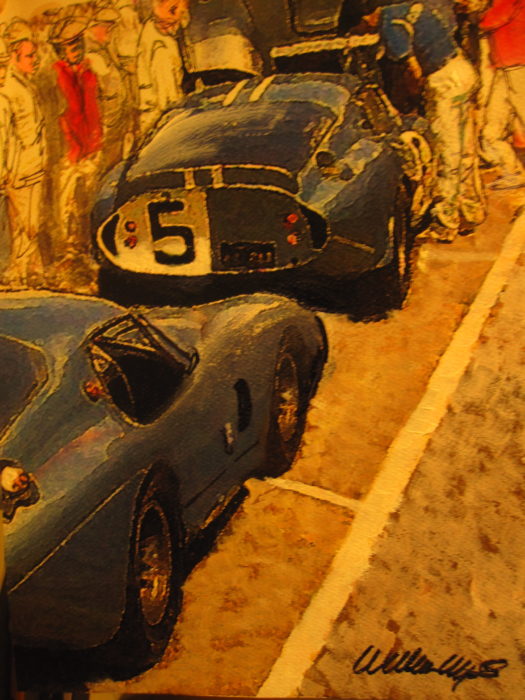
Ferrari GTOs out numbered Daytonas six to one but the Daytonas eventually vanquished them. Painting by Wallace Wyss.
Photos originally provided by Paul Preuss, Ford PR for the Wyss book Shelby’s Wildlife: the Cobras and the Mustangs.
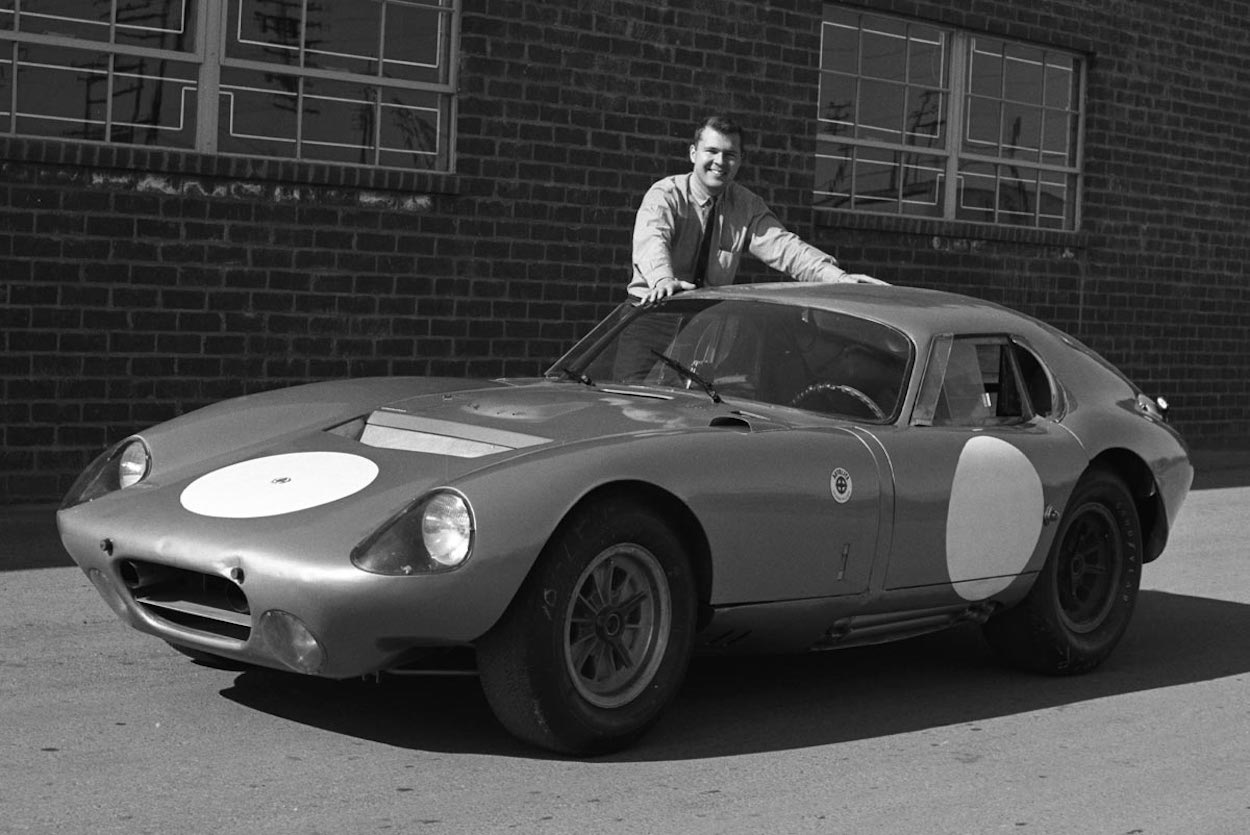
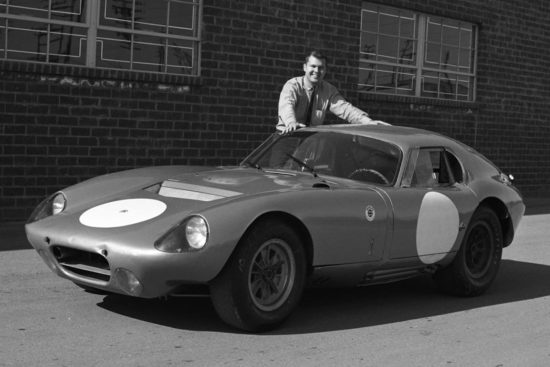
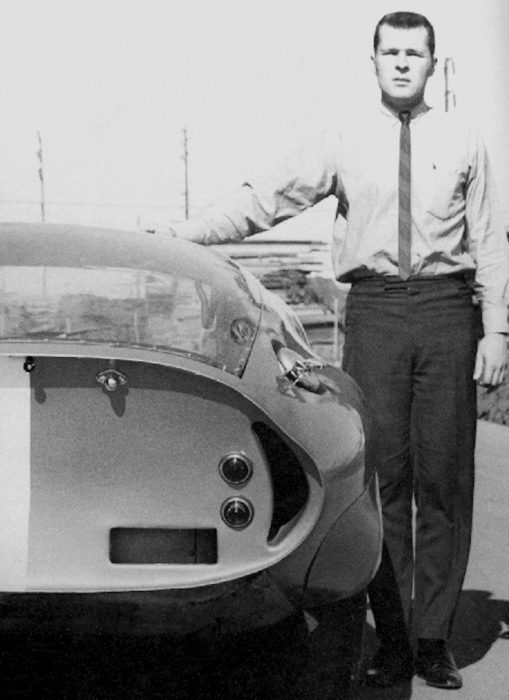

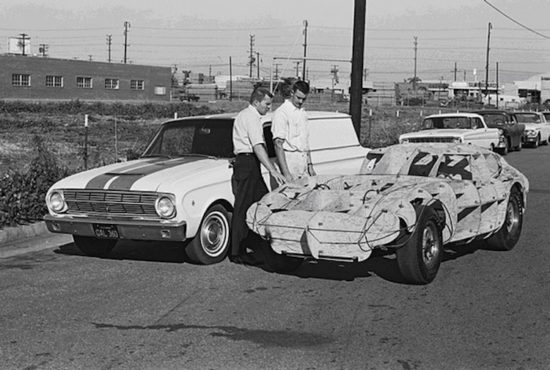
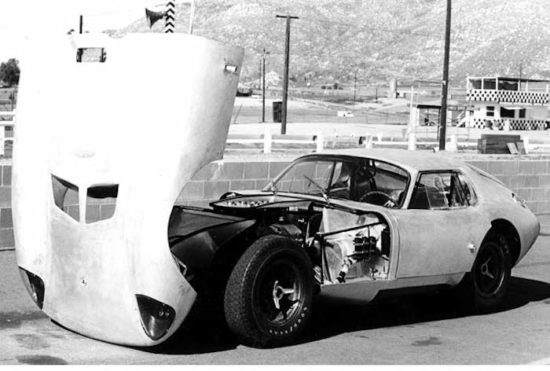
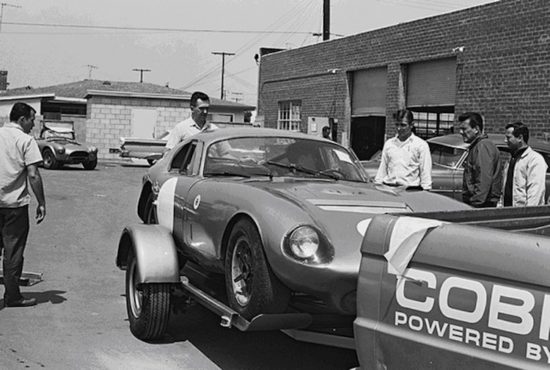



I always found it odd how much hoopla was made about the Daytona’s tail when as you mention many other cars of the era used the design. Then there’s the windshield which is like a brick wall aerodynamically. A better design was the Iso Rivolta A3C
Mike, I can’t argue with you – look at this photo I put together a few years ago showing the side profile of the Ferrari 250 GTO, Ferrari 250 Breadvan, Bizzarrini GT 5300 Strada (from top to bottom). You can just see the aerodynamics getting better with each Bizzarrini engineered car.
The 250GTO and the Bizzarrini were both roadable cars that could be driven to the corner store, I know because I bought three Bizzarrinis when I was a car hunter and the Motor Trend assistant Art Director drove me around Hollywood in a 250GTO he borrowed when they were just $90,000 cars. But what I understand is that the Daytona coupe, owning to having no windows that could be cranked down were hotboxes and crude, so I think it was just bad timing for poor Peter, he developed a design that was “dead in the water” once Ford saw the GT40 could be a winner.
The first coupe and the only one fabricated entirely in the US, #2287, currently resides in the Simeone Foundation Automotive Museum in Philadelphia, PA. It is exercised a number of times each year during the museums Demonstration Days. It is without doubt the most popular car in the entire collection.
https://www.simeonemuseum.org/collection/1964-shelby-cobra-daytona-coupe/
Yes, the former Phil Spector Daytona. For sale in Road & Track in 1966.
Now that is provenance . I like how they have the front lic plate slapped on the front.